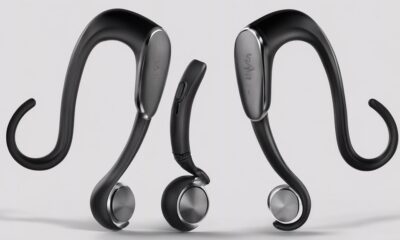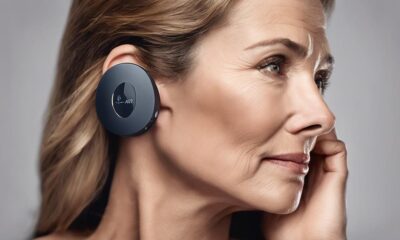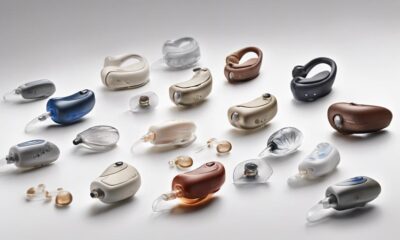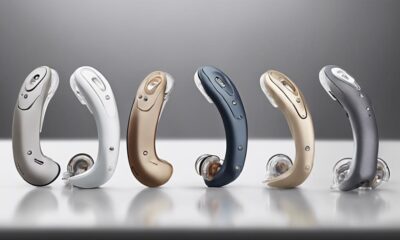Living with Hearing Loss
Do Deaf People Still Use TTY for Communication?
Pondering the relevance of TTYs in deaf communication today? Discover why these devices remain crucial despite evolving technologies.

Some individuals may not be aware that TTYs are still an essential tool for communication within the deaf community. Despite the introduction of newer technologies, TTYs remain crucial in assisting deaf individuals with their interactions.
However, the landscape of communication tools is evolving rapidly, prompting questions about the future of TTY in this dynamic environment.
Let's explore the reasons behind the enduring usage of TTYs and the challenges they face in today's communication landscape.
Key Takeaways
- TTY remains vital for direct emergency access.
- Modern tools offer faster connections but lack direct 9-1-1 access.
- Challenges include decreasing TTY relay services and maintenance issues.
- Balancing traditional TTY with modern tech is crucial for inclusivity.
Evolution of TTY Technology
In the realm of telecommunications for individuals with hearing impairments, the evolution of TTY (also known as teletypewriter) technology has been pivotal in enhancing accessibility and facilitating direct communication. Robert Weitbrecht's development of the TTY in the 1960s marked a significant milestone in enabling deaf and hard of hearing individuals to engage in telephone communication.
Over the years, advancements in TTY technology have led to the availability of more compact versions in the late 1970s and 1980s, offering increased portability and accessibility for users. Additionally, the establishment of TTY relay services has played a crucial role in bridging the communication gap between TTY users and those using traditional telephones. These relay services were further solidified with the mandate of nationwide services under ADA Title IV in 1990, ensuring equal access to telecommunications for individuals with hearing impairments.
Despite the emergence of new communication technologies, many deaf and hard of hearing individuals continue to rely on TTYs for direct access to 9-1-1 emergency services and everyday communication needs.
Benefits of TTY for Deaf Communication

Utilizing TTY technology offers deaf individuals essential communication benefits, enabling direct interaction over the telephone and facilitating access to vital services like emergency assistance. TTYs serve as a crucial communication tool within the deaf community, providing accessibility and ensuring prompt connection to emergency services when needed.
Here are some key benefits of TTY for deaf communication:
- Direct Communication: TTYs allow deaf individuals to communicate directly over the phone, bridging the gap in verbal conversations.
- Emergency Services: TTYs offer immediate access to emergency assistance such as police, fire, or medical services through 911 services.
- Accessibility: TTY technology enhances accessibility for deaf individuals, breaking down communication barriers in various settings.
- Vital Communication: TTYs remain indispensable for those who lack access to newer technologies, ensuring they can stay connected effectively.
- Support Alongside Modern Tools: While newer communication tools have emerged, TTYs continue to complement them, providing a reliable communication option for the deaf community.
TTY Vs. Modern Communication Tools
Transitioning to newer communication technologies, deaf individuals are evaluating the efficiency of TTY compared to modern tools for their communication needs. While TTY has been a longstanding method for deaf individuals to communicate, the advent of modern technology poses a challenge to its continued relevance.
Modern communication tools offer faster, more versatile ways to connect, but TTY remains crucial for those without access to affordable broadband. TTY's direct access to 9-1-1 emergency services is a critical feature that ensures the safety of deaf individuals in times of crisis. Additionally, TTY provides a reliable means of communication for those who prefer or require typed messages over the telephone.
As the deaf community navigates this transition, the importance of balancing traditional TTY functionality with the conveniences of modern communication technology becomes evident. Striking a balance between these options will be essential to meet the diverse communication needs of the deaf population efficiently.
Challenges in TTY Usage Today
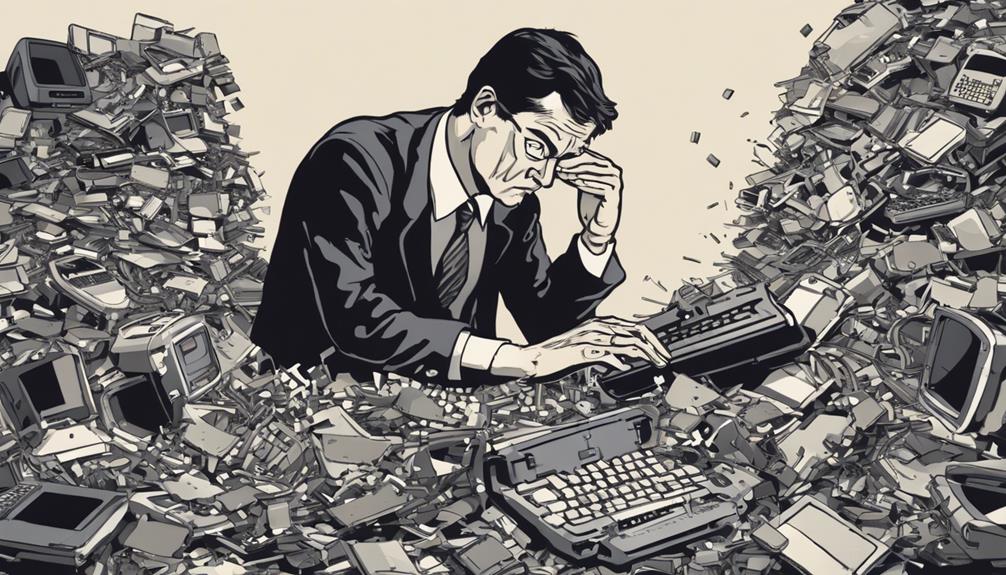
Moving beyond the comparison between TTY and modern communication tools, the challenges faced in TTY usage today highlight the evolving landscape of communication options for the deaf community. Despite its historical significance, TTY usage encounters various obstacles in today's technological environment.
- Limited Availability of TTY Relay Services: The decreasing prevalence of TTY relay services makes it harder for deaf individuals to connect through this traditional method.
- Maintenance Issues with Aging TTY Equipment: The upkeep of older TTY machines poses difficulties as newer technologies outpace the support for these devices.
- Privacy Concerns: Some deaf individuals still prefer TTY for its privacy advantages over newer communication methods.
- Reliability on Unreliable Internet Connectivity: In areas with poor internet connectivity, TTY remains a more dependable form of communication.
- Competition from Modern Communication Options: The rise of smartphones and communication apps offering more versatile options poses a challenge to the continued use of TTY.
Future of TTY in Communication Landscape
In considering the future of TTY in the communication landscape, the ongoing advancements in technology present both opportunities and challenges for deaf individuals relying on this traditional communication method. While TTYs have been a cornerstone in facilitating communication for the deaf community, the transition to newer communication technologies is gaining momentum. Internet-based relay services are becoming increasingly popular, offering more accessible and versatile options for communication. This shift reflects a changing landscape where TTY users are gradually exploring alternative means of communication that align with the evolving digital age.
Despite these advancements, TTYs continue to play a crucial role in providing accessible communication options for many deaf and hard of hearing individuals. The direct access to emergency services such as 9-1-1 remains a key feature that ensures the safety and well-being of users. However, challenges persist, especially for those without affordable broadband or Internet access, highlighting the importance of maintaining TTY services alongside emerging communication technologies. As the communication landscape evolves, finding a balance between traditional TTY systems and modern solutions will be essential to ensure inclusivity and accessibility for all members of the deaf community.
Frequently Asked Questions
Do Deaf People Still Use Tty?
We do use TTY for communication. It provides direct access to telephone services and is crucial for emergencies like 9-1-1. While some are adopting newer tech, TTY remains essential for those lacking broadband.
It's a vital tool for daily communication in the deaf community. TTY usage varies, with many still relying on it. The technology continues to play a significant role in connecting deaf and hard of hearing individuals.
What Replaced the Tty?
We've seen a significant shift away from TTYs towards more advanced communication technologies like text messaging, video calls, and real-time captioning services. These newer options provide greater efficiency and accessibility for the deaf and hard of hearing community.
The decline in TTY usage is a reflection of the broader trend towards embracing more versatile and inclusive communication tools that cater to diverse needs.
What Do Deaf People Use Now to Talk on the Phone?
We now mainly use video relay services and text-based apps for phone communication. These options offer more flexibility and accessibility compared to TTY.
Video relay services allow us to communicate through sign language with the help of interpreters, while text-based apps enable us to type messages back and forth.
These newer technologies enhance our ability to connect with others in a more efficient and convenient manner.
What Are the Disadvantages of Tty?
On the topic of the disadvantages of TTY, it's essential to consider its limitations in speed and compatibility.
TTY communication can lack the immediacy of real-time conversations, posing challenges in interactions with non-TTY users. Additionally, the need for a dedicated phone line can be costly.
These factors collectively contribute to the drawbacks of TTY technology, making it less efficient compared to modern communication methods.
Can Deaf People Use TTY to Access Deaf Chat Rooms for Communication?
Yes, deaf people can use TTY to access free deaf chat rooms for communication. TTY, or teletypewriter, allows individuals with hearing impairments to type and read messages. This technology enables deaf individuals to participate in conversations in free deaf chat rooms and connect with others in the deaf community.
Conclusion
In conclusion, TTY technology continues to be a lifeline for the deaf and hard of hearing community, serving as a bridge to seamless communication.
While newer communication tools are emerging, TTYs remain a vital resource for those without access to broadband or internet services.
Like a steadfast beacon in a sea of change, TTYs stand firm in their role as essential communication tools for those who rely on them for daily interactions.
Jamie is one of the creative forces behind the words that resonate with our audience at Deaf Vibes. With a passion for storytelling and advocacy, Jamie delves into topics that matter deeply to the deaf and hard-of-hearing community. Jamie’s articles are crafted with empathy, insight, and a commitment to positive change, from exploring the latest advancements in hearing technologies to shedding light on the everyday challenges and victories of those within the community. Jamie believes in the power of shared stories to inspire action, foster understanding, and create a more inclusive world for everyone.
Living with Hearing Loss
Discovering Deaf Again: Audiobook Guide
Buckle up for a transformative journey into the diverse world of the deaf community, challenging your perceptions and opening doors to new perspectives.

Are you ready to embark on a journey that will transform your understanding of the deaf community?
'Discovering Deaf Again: Audiobook Guide' offers a unique perspective that challenges preconceived notions and opens doors to a world of diversity and empowerment.
This audiobook guide goes beyond the surface to explore the intricacies of deaf culture, providing a comprehensive look at the experiences and choices that shape the lives of deaf and hard of hearing individuals.
Find out how this guide can reshape your perceptions and broaden your horizons in ways you never imagined.
Key Takeaways
- Delve into the vibrant Deaf culture through 'Deaf Again' for a deep understanding and appreciation.
- Experience the immersive audiobook journey unraveling the complexities and empowerment of the Deaf identity.
- Embrace diversity within the Deaf community, celebrating varied communication methods and shared experiences.
- Gain educational insights on Deaf culture, advocacy for American Sign Language, and the personal journey of straddling two worlds.
Understanding Deaf Culture Through Sound
Immerse yourself in the vibrant world of Deaf culture through the sensory exploration of sound in 'Deaf Again'. This audiobook delves into the intricacies of being Deaf in a world that often prioritizes hearing abilities. Through 'Deaf Again', you'll gain a deeper understanding of Deaf culture and the significance of American Sign Language (ASL) as a vital form of communication within the community.
Within the pages of this audiobook, you'll discover the challenges faced by Deaf individuals in a society that may not always recognize or accommodate their needs. 'Deaf Again' eloquently emphasizes the importance of cultural accessibility and the acceptance of Deaf culture as a rich and valuable part of society.
Immersive Audiobook Experience

Experience a truly captivating journey through the world of 'Deaf Again' as you dive into its immersive audiobook presentation. Delve into the heart of self-discovery as the audiobook unravels the intricate layers of the deaf experience, offering a profound exploration of identity and belonging.
Through 'Deaf Again,' listeners are guided through a narrative that champions authenticity and celebrates the unique perspectives of deaf and hard of hearing individuals. This audiobook serves as a beacon of empowerment, encouraging listeners to embrace their true selves and navigate the complexities of fitting in while honoring their distinct identity within the deaf community.
Diversity in the Deaf Community

Diversity within the Deaf community is exemplified by a wide spectrum of individuals with varying degrees of hearing loss and unique communication preferences. This diversity is a core aspect of the Deaf community, fostering a rich tapestry of experiences and perspectives.
- Varied Degrees of Hearing Loss: Individuals in the Deaf community may experience a range of hearing loss, from mild to profound, shaping their interactions and preferences.
- Celebration of Sign Language: Sign language is cherished within the Deaf community as a fundamental mode of communication and a vital component of cultural identity.
- Diverse Communication Choices: Deaf individuals have the autonomy to choose their preferred communication methods, including hearing aids, cochlear implants, sign language, or a combination thereof.
- Promotion of Acceptance and Support: The Deaf community values acceptance, understanding, and support for individuals with hearing loss, creating a nurturing environment for all its members.
This vibrant community thrives on inclusivity, shared experiences, and a strong sense of unity among its diverse members.
Storytelling From a Deaf Perspective

Explore the captivating narratives woven through the lens of Deaf experiences in 'Deaf Again'. The book provides a raw and authentic look at the challenges faced by Deaf individuals as they navigate a world predominantly designed for the hearing. From childhood to adulthood, the author shares the struggles of feeling torn between two worlds—the Deaf and hearing communities. 'Deaf Again' delves into the societal pressures to conform to hearing norms, shedding light on the isolation and discrimination often experienced by Deaf individuals.
To delve deeper into the insights provided by 'Deaf Again' from a Deaf perspective, let's explore some key themes highlighted in the book:
| Themes | Description |
|---|---|
| Challenges | Discusses the obstacles and hurdles faced by Deaf individuals in mainstream society and schools. |
| Cultural Insights | Explores Deaf culture as a unique identity, showcasing the strength and resilience within the community. |
Educational Insights on Deaf Culture

Delve into the educational insights provided by 'Deaf Again' to gain a deeper understanding of Deaf culture and the significance of cultural accessibility. Here are some key takeaways from the audiobook that shed light on the complexities of Deaf culture, identity, and communication:
- Cultural Accessibility: 'Deaf Again' emphasizes the importance of creating an inclusive environment for Deaf individuals by promoting cultural accessibility and acceptance.
- Identity Formation: The audiobook explores how family dynamics can shape one's sense of identity and belonging within the Deaf community, highlighting the impact of upbringing on self-perception.
- Communication Strategies: 'Deaf Again' advocates for the learning and use of American Sign Language (ASL) as a means of effective communication, bridging the gap between Deaf and hearing individuals.
- Personal Journey: Through the author's personal narrative, listeners gain insights into the challenges of navigating between the hearing and Deaf worlds, offering a glimpse into the complexities of straddling two distinct communities.
Frequently Asked Questions
Can Sign Language Be Effectively Conveyed Through an Audiobook Format?
Sign language cannot be effectively conveyed through an audiobook format due to its visual nature. Audiobooks rely on auditory input, lacking the essential visual components of sign language. An alternative medium, such as video, would better accommodate sign language communication.
How Does the Audiobook Address the Intersectionality of Identities Within the Deaf Community?
You'll find the audiobook delving into the intricate web of identities within the deaf community. It shines a light on the diverse experiences and perspectives that make up this vibrant tapestry, fostering a deeper understanding of intersectionality.
Are There Any Specific Challenges or Opportunities in Creating an Immersive Audiobook Experience for a Deaf Audience?
In creating an immersive audiobook for a deaf audience, challenges like ensuring clear visual descriptions and opportunities like utilizing sound effects for enhanced storytelling arise. Balancing accessibility and engagement is key for success.
How Does the Audiobook Incorporate Visual Elements or Cues to Enhance the Storytelling Experience for Deaf Listeners?
Incorporate visual elements like descriptive language, sound effects, and tone variations to enhance the storytelling experience for deaf listeners. These cues provide a rich and immersive atmosphere, making the audiobook engaging and accessible.
What Unique Insights or Perspectives on Deaf Culture Does the Audiobook Offer That May Not Be Covered in Traditional Educational Materials?
Delve into uncharted territories of deaf culture with fresh perspectives and untold stories. Discover nuances and authentic experiences that traditional resources overlook. Embrace a new understanding of deafness through the audiobook's rich narrative.
Conclusion
In conclusion, 'Discovering Deaf Again: Audiobook Guide' immerses you in the rich tapestry of deaf culture, offering diverse perspectives and educational insights. By embracing this audiobook experience, you not only gain a deeper understanding of the deaf community but also empower yourself to navigate the challenges and choices that lie ahead.
Through storytelling and self-discovery, you can foster a sense of belonging and embrace your unique identity within the deaf community. Discover the power of your own voice.
Jamie is one of the creative forces behind the words that resonate with our audience at Deaf Vibes. With a passion for storytelling and advocacy, Jamie delves into topics that matter deeply to the deaf and hard-of-hearing community. Jamie’s articles are crafted with empathy, insight, and a commitment to positive change, from exploring the latest advancements in hearing technologies to shedding light on the everyday challenges and victories of those within the community. Jamie believes in the power of shared stories to inspire action, foster understanding, and create a more inclusive world for everyone.
Living with Hearing Loss
How Kirkland Makes Hearing Aids: A Guide
Yearning to discover the secrets behind Kirkland's exceptional hearing aids?
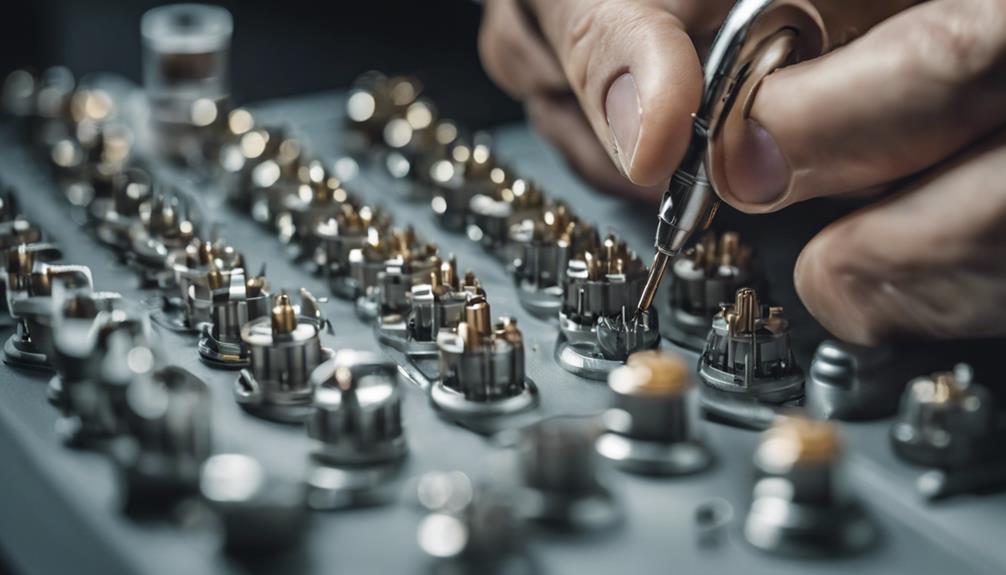
As we delve into the detailed process of how Kirkland manufactures hearing aids, it is truly captivating to see the fusion of technology and artisan skills involved in producing these devices.
From the initial design stages to the final quality assurance checks, every step in the production journey contributes to the exceptional performance and comfort of the Kirkland Signature 10.0t model.
But what really sets these hearing aids apart? Stay tuned to uncover the secrets behind the precision manufacturing processes and advanced technology that make Kirkland hearing aids a top choice for users seeking optimal hearing solutions.
Key Takeaways
- Collaborate with Sonova for prototype design, focusing on functionality and user experience.
- Choose premium materials and quality components for durability and optimal performance.
- Utilize precision manufacturing and automation for consistent quality and efficiency.
- Prioritize customization, user experience, and support for tailored hearing aid solutions.
Designing the Hearing Aid Prototype
Collaborating with Sonova, we meticulously design and develop the prototype for Kirkland's hearing aids, ensuring they undergo rigorous testing for performance, comfort, and durability. When creating the prototype, various design elements such as size, shape, and color are carefully considered to meet the diverse needs of our customers. We also integrate advanced technologies like Bluetooth connectivity and tap control into the prototype to enhance the overall user experience.
During the design phase, our team focuses on not only the functionality of the hearing aids but also on the aesthetic appeal and ergonomic design. By incorporating feedback from focus groups and experts, we can refine the prototype further before moving into mass production. This iterative process allows us to fine-tune every aspect of the hearing aid, ensuring that it meets the highest standards of quality and performance. At Kirkland, we're dedicated to creating hearing aids that not only improve the quality of life for our customers but also exceed their expectations in terms of design and functionality.
Selecting High-Quality Materials

Selecting premium-grade materials is a crucial step in ensuring the durability and comfort of Kirkland's hearing aids. When it comes to combating hearing loss, the quality of the components used in our devices plays a significant role in delivering optimal performance.
Kirkland meticulously chooses high-quality plastics and metals, akin to selecting prime real estate, to construct durable and comfortable hearing aids that users can rely on. Moreover, sourcing top-notch microphones and speakers is paramount in guaranteeing clear sound reception and transmission, enhancing the overall auditory experience for our customers.
Precision Manufacturing Processes
At Kirkland, our precision manufacturing processes utilize state-of-the-art automated assembly systems to ensure consistent quality and efficiency. These systems allow us to meticulously craft each component of our hearing aids with precision and accuracy.
Our stringent quality control measures are integrated at every step to guarantee that each device meets our high standards for durability and performance.
Automated Assembly Systems
Utilizing advanced automated assembly systems, Kirkland ensures precision in manufacturing their hearing aids to maintain consistent quality standards. These systems are a good thing for us as they allow for intricate details to be accurately put together, ensuring that wearers can hear the sound with clarity.
By incorporating robotics and specialized machinery, Kirkland can reduce the margin of error, leading to higher efficiency during production. The automated assembly process streamlines manufacturing, enabling tight tolerances to be achieved in assembling the hearing aid components.
This level of accuracy in production is crucial for the optimal performance of the hearing aids, ensuring that each device meets the high-quality standards expected by Kirkland's customers.
Quality Control Measures
In maintaining our commitment to excellence in manufacturing, Kirkland upholds stringent quality control measures throughout the production process to ensure the precision and reliability of each hearing aid.
Our rigorous checks at every stage, coupled with advanced technologies and specialized equipment, guarantee consistent quality standards. Each component undergoes meticulous crafting and testing to meet strict specifications and performance requirements.
Thorough inspections, calibration tests, and adherence to industry regulations are integral parts of our quality control measures, ensuring optimal functionality. Kirkland's dedication to precision manufacturing processes results in hearing aids that aren't only reliable and durable but also provide exceptional sound quality and performance, meeting the highest standards of our customers' expectations.
Incorporating Advanced Technology

We integrate cutting-edge technology, such as Bluetooth Classic and tap control, into Kirkland hearing aids to enhance user experience.
Motion sensors are utilized to improve interaction and functionality, while integrated Roger receivers help in background noise reduction for clearer speech.
Our aids also support Bluetooth streaming, allowing for hands-free calls and wireless audio connectivity.
Cutting-Edge Tech Integration
Our approach to incorporating cutting-edge technology in Kirkland Signature hearing aids sets a new standard in enhancing user experience and adaptability. By integrating features like Bluetooth connectivity, users can seamlessly pair their devices with our aids for a more connected experience.
The inclusion of motion sensors further enhances adaptability, adjusting settings based on movement for optimal performance. Additionally, the integration of Roger receivers improves speech understanding in noisy environments, ensuring clear communication in various situations.
Our use of telecoil technology enables better hearing in venues equipped with loop systems, providing amplified sound directly to the aids. Moreover, the EasyLine Remote App empowers users to personalize settings easily, offering a tailored hearing solution at their fingertips.
Innovation in Production
Utilizing cutting-edge techniques such as 3D printing and laser cutting, Kirkland incorporates advanced technology in the production of their hearing aids to ensure precision and innovation.
The incorporation of AI algorithms guarantees precise customization and fitting for each user, while automated assembly lines streamline manufacturing for efficiency.
Quality control measures, including rigorous testing and inspection, ensure the reliability and performance of each hearing aid.
Continuous research and development efforts further drive innovation in Kirkland's production processes, allowing them to meet the evolving needs of consumers efficiently.
Assembling the Internal Components
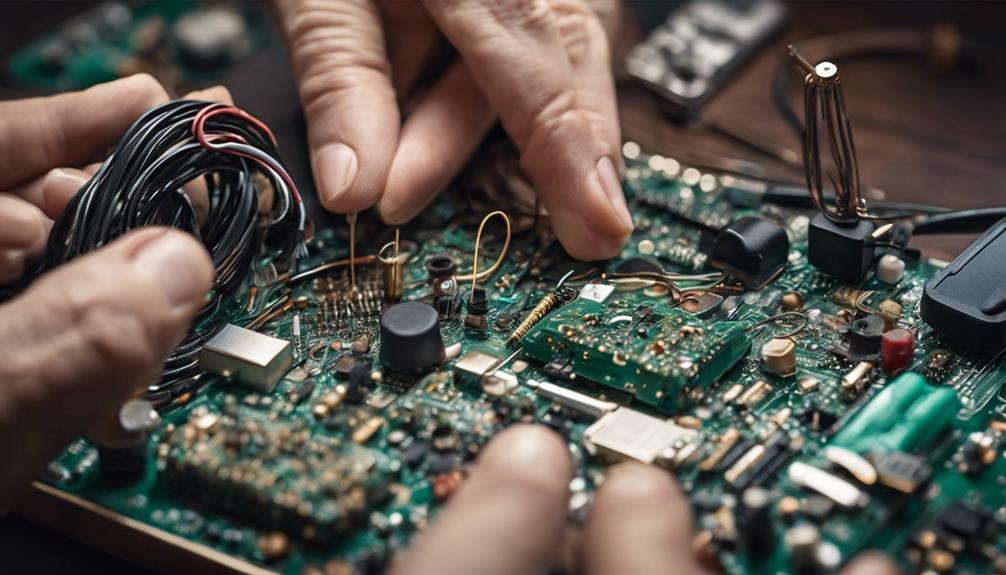
When assembling the internal components of Kirkland hearing aids, skilled technicians meticulously place the microphones, processors, and speakers into the housing with precision. Each component is carefully positioned to ensure seamless integration and optimal functionality. The microphones, responsible for capturing sounds, are strategically located to capture a wide range of frequencies effectively.
Processors, the brains of the hearing aid, are intricately placed to process and enhance the incoming sound signals. Speakers, crucial for delivering amplified sounds to the wearer, are delicately installed to provide clear and natural sound quality.
Precision is paramount during this process to guarantee that all components work harmoniously together, amplifying sounds and ultimately improving the wearer's hearing experience. By sourcing high-quality internal components from trusted manufacturers and utilizing the expertise of skilled technicians, Kirkland ensures that each hearing aid meets rigorous standards for performance and durability. This meticulous assembly process sets the foundation for the functionality and quality of the final product.
Testing for Functionality and Quality
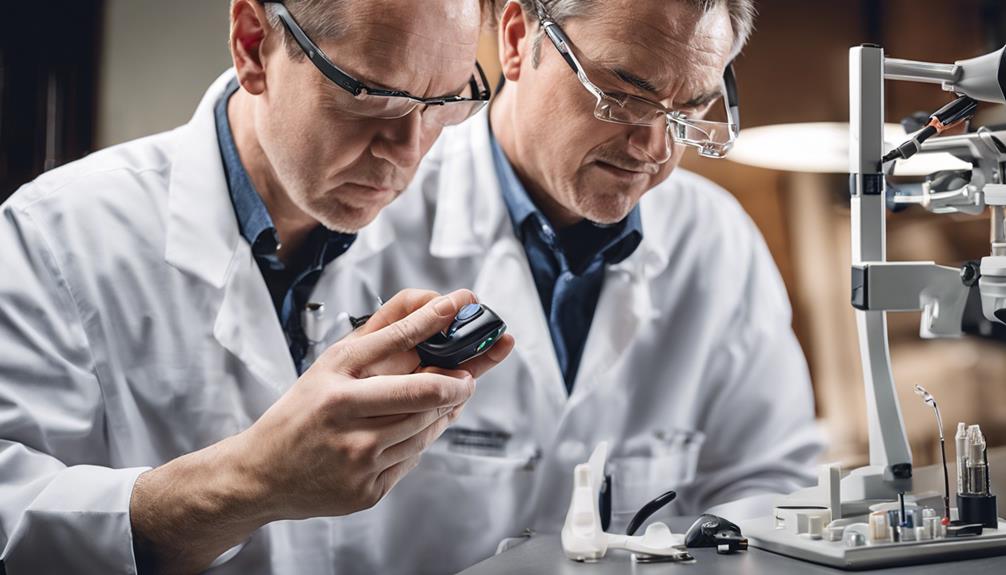
Conducting meticulous and comprehensive functional tests is a critical step in ensuring the quality and reliability of Kirkland hearing aids. Our dedication to delivering top-notch products is evident in the rigorous testing procedures each device undergoes. Here's how we ensure that every Kirkland hearing aid meets our high standards:
- Sound Clarity Testing:
Each hearing aid is meticulously tested to guarantee optimal sound clarity across different frequencies.
- Volume Adjustments:
We check and recheck the volume adjustments to ensure smooth transitions and accurate levels.
- Program Changes:
Testing includes verifying the effectiveness of different programs and the seamless transition between them.
- Connectivity Features:
The functionality of connectivity features such as Bluetooth and wireless capabilities is thoroughly tested to provide a seamless user experience.
Fine-Tuning Sound Performance
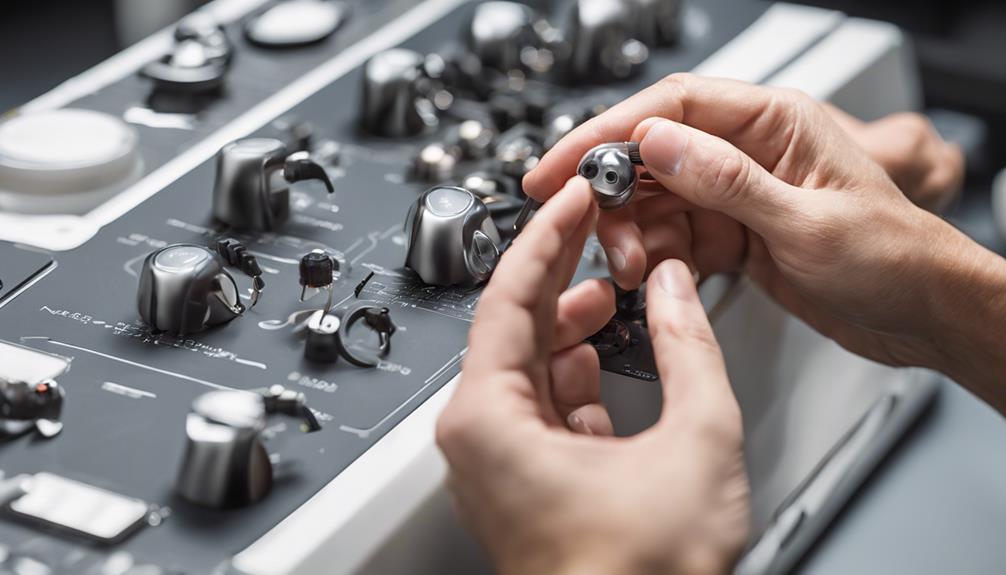
To ensure optimal sound performance tailored to individual needs, Kirkland meticulously fine-tunes the frequency response of each hearing aid. This process involves adjusting the frequency response to match the specific hearing requirements of the wearer. By customizing the sound profile, Kirkland ensures that users receive the best possible listening experience. Additionally, speech enhancement settings can be personalized to improve clarity during conversations in noisy environments. Compression settings are also fine-tuned to enhance comfort and speech understanding. Furthermore, feedback management systems are employed to eliminate whistling and enhance overall sound quality. Real ear measurements play a crucial role in this fine-tuning process, ensuring that the hearing aids provide accurate amplification tailored to the user's unique ear shape and size.
| Fine-Tuning Sound Performance | |
|---|---|
| Adjusting Frequency Response | Customizing Sound Profile |
| Personalizing Speech Settings | Enhancing Comfort and Clarity |
| Utilizing Feedback Management | Ensuring Accurate Amplification |
Customizing for Individual Needs
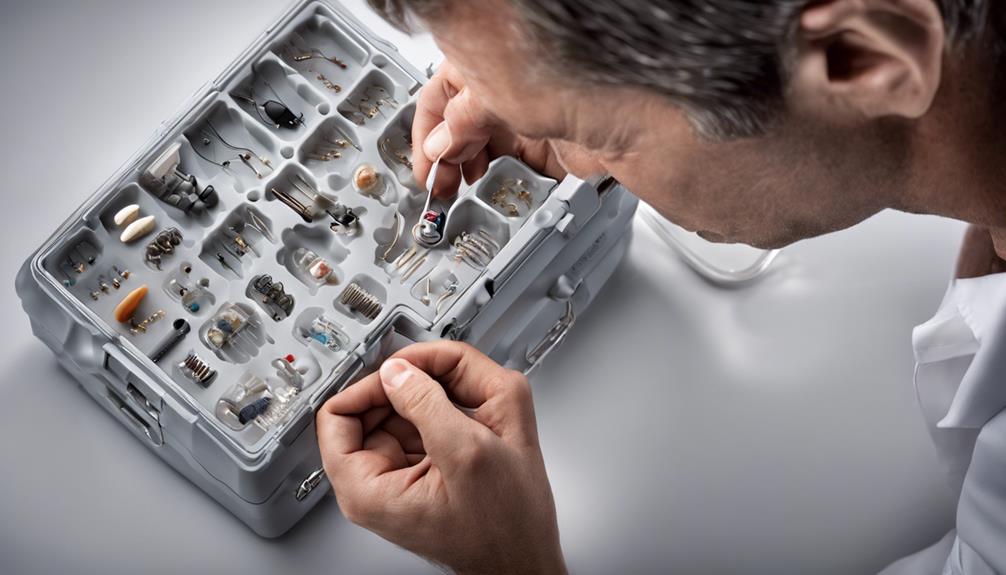
In our meticulous process of customizing hearing aids for individual needs, Kirkland carefully adjusts settings such as volume, noise reduction, and speech enhancement to meet specific hearing requirements. Here's how we tailor each hearing aid to suit the unique needs of our customers:
- Personalized Fitting Options: We offer customized fitting options to enhance comfort and sound quality based on individual ear anatomy and preferences.
- Fine-Tuning Frequency Response: Our experts fine-tune the frequency response to address distinct hearing loss patterns, ultimately improving speech clarity for users.
- Real-Ear Measurement: Kirkland's professional audiologists utilize real-ear measurement techniques to ensure precise customization for each individual, guaranteeing optimal performance.
- Enhanced User Satisfaction: Individual customization not only improves speech understanding but also boosts overall hearing aid performance, leading to heightened user satisfaction.
Through these personalized adjustments, we strive to provide our customers with hearing aids that cater specifically to their unique hearing needs, enhancing their overall auditory experience.
Packaging and Quality Assurance
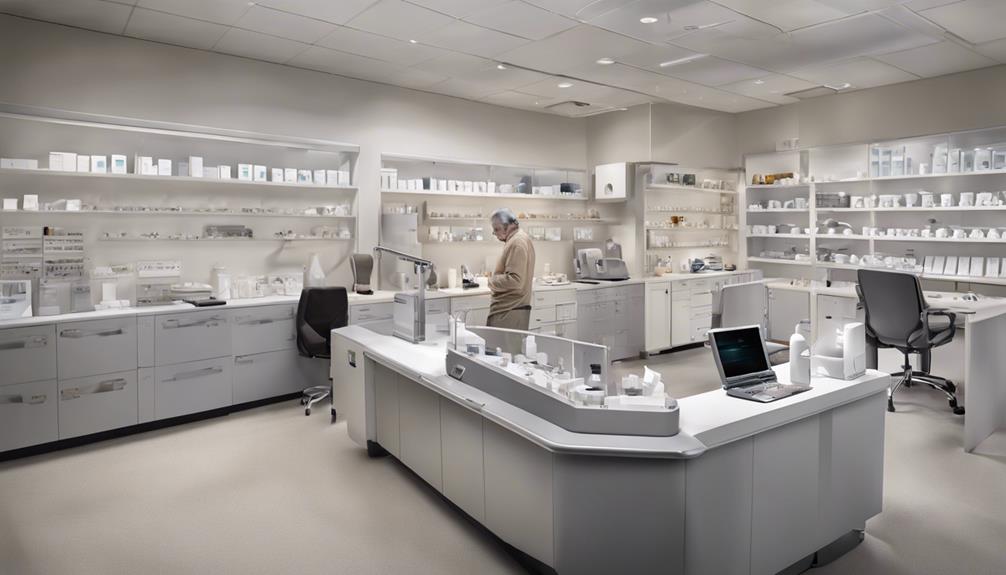
During our meticulous process of preparing Kirkland hearing aids for distribution, we focus on packaging and quality assurance to ensure the highest standards of functionality and user satisfaction. Each Kirkland hearing aid undergoes rigorous quality assurance testing to guarantee optimal performance. Our dedicated team meticulously inspects every device to ensure it meets our stringent functionality and performance standards before being carefully packaged.
The packaging includes protective cases, charging accessories, and user manuals to provide convenience and ease of use for our customers. Quality control measures are implemented at every stage to ensure that only fully functional hearing aids reach the end-user, reflecting our commitment to delivering top-notch products. The packaging design is user-friendly, featuring clear instructions for setup and maintenance, enhancing the overall user experience.
At Kirkland, we prioritize quality assurance and packaging to uphold our reputation for excellence in providing reliable hearing solutions.
Distribution and Customer Support
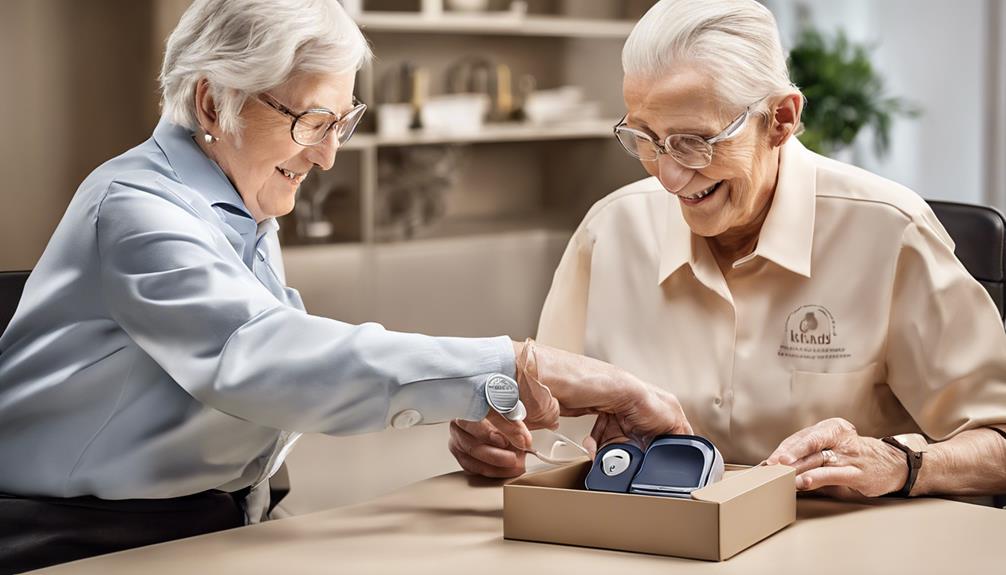
At Kirkland, we prioritize providing excellent customer support through our widespread service centers, ensuring accessibility for those seeking assistance with their hearing aids.
Our warranty coverage details offer peace of mind to customers, guaranteeing quality and reliability in our products.
Additionally, online support options further enhance the customer experience, offering convenience and quick solutions for any inquiries or issues that may arise.
Service Centers Availability
Within select Costco warehouses across the United States, customers can access Kirkland hearing aids exclusively at Costco Hearing Aid Centers, which provide a range of professional services and customer support for users.
- Professional Services: Costco Hearing Aid Centers offer comprehensive services including hearing tests, fittings, adjustments, and follow-up care.
- Dedicated Support Team: Customers have access to a team of audiologists and hearing aid specialists for assistance with questions, troubleshooting, and maintenance.
- Transparent Pricing: Costco's pricing model ensures cost-effective options compared to traditional retailers.
- Convenient Availability: With extended hours and flexible appointment scheduling, Costco Hearing Aid Centers cater to customers' busy schedules.
Costco's commitment to quality service and support ensures a seamless experience for Kirkland hearing aid users.
Warranty Coverage Details
We ensure comprehensive warranty coverage details for distribution and customer support of Kirkland hearing aids from Costco. Our hearing aids typically come with a 3-year warranty that covers repairs and services provided by Costco's hearing aid centers. This warranty ensures that customers can access necessary services at any Costco warehouse offering hearing aid support.
By guaranteeing reliable distribution and customer support, we aim to enhance user satisfaction and demonstrate our commitment to quality. The warranty coverage details for Kirkland hearing aids highlight Costco's dedication to providing excellent support for our valued customers.
Rest assured, we stand by our products and are here to assist with any issues that may arise during the warranty period.
Online Support Options
To enhance the customer experience and provide comprehensive support, our online resources for Kirkland hearing aids at Costco offer a range of helpful tools and information.
- User manuals and guides for setup and troubleshooting are readily available.
- Instructional videos walk you through maintenance and care procedures.
- Prompt assistance is provided through phone, email, and live chat by Costco's support team.
- Enjoy the peace of mind with Costco's reliable return policy and warranty coverage for Kirkland Signature hearing aids.
These online resources, combined with community forums for sharing experiences and recommendations, create a supportive environment for Kirkland hearing aid users seeking guidance and assistance.
Frequently Asked Questions
Why Did Costco Stop Selling Kirkland Hearing Aids?
We stopped selling Kirkland hearing aids due to a shift in our product focus and the end of our partnership with Sonova. This decision allowed us to concentrate on other hearing aid brands.
Rest assured, we continue to support customers who've purchased Kirkland hearing aids and offer a range of quality alternatives. Our commitment remains providing excellent service and solutions for all your hearing needs.
Who Manufactures Costco Kirkland Hearing Aids?
We manufacture Costco Kirkland Signature hearing aids in collaboration with Sonova, a global leader in cutting-edge hearing care solutions. The partnership ensures Costco members receive high-quality, cost-effective hearing aids like the Kirkland Signature 10.0t model.
Sonova's advanced manufacturing facilities adhere to strict quality standards, guaranteeing reliable and efficient products. This collaboration allows for the integration of innovative features, enhancing the overall user experience with our Kirkland Signature line.
Why Are Costco Hearing Aids so Cheap?
Costco's hearing aids are affordable because of their direct-to-consumer approach, cutting out middlemen and reducing costs. By working with top manufacturers like Sonova and leveraging Costco's buying power, we negotiate better prices and pass on those savings to our customers.
Our membership-based model and lack of commissioned sales staff also contribute to keeping prices lower. This allows us to make quality hearing aids accessible to a wider range of customers.
Who Makes the Best Hearing Aids in the United States?
We believe that the best hearing aids in the United States are those that combine advanced technology, comfort, and affordability. Brands like Sonova, which manufactures Kirkland Signature hearing aids for Costco, are known for their high-quality products and innovative features.
Conclusion
In conclusion, the intricate process of how Kirkland makes hearing aids is truly a blend of art and science.
From designing the prototype to fine-tuning sound performance, each step is carefully executed to ensure top-notch quality.
With advanced technology and high-quality materials, these aids are customized for individual needs, providing a seamless listening experience.
Remember, when it comes to hearing aids, Kirkland goes the extra mile to ensure you hear crystal clear.
Jamie is one of the creative forces behind the words that resonate with our audience at Deaf Vibes. With a passion for storytelling and advocacy, Jamie delves into topics that matter deeply to the deaf and hard-of-hearing community. Jamie’s articles are crafted with empathy, insight, and a commitment to positive change, from exploring the latest advancements in hearing technologies to shedding light on the everyday challenges and victories of those within the community. Jamie believes in the power of shared stories to inspire action, foster understanding, and create a more inclusive world for everyone.
Living with Hearing Loss
What Makes Speaking in Front of a Deaf Person Without Sign Language Rude?
Hesitate to speak in front of a deaf person without sign language to uncover the hidden rudeness behind this seemingly innocent act.

Have you ever considered the impact of your verbal communication on individuals who are deaf or hard of hearing? Imagine being in a room filled with chatter that you cannot understand because you are unable to hear.
Speaking in front of a deaf person without sign language may seem harmless, but it can unknowingly create barriers to genuine communication and connection. By understanding the importance of accessible communication for the deaf community, we can foster inclusivity and respect in our interactions.
But what are the underlying reasons that make this seemingly innocent act potentially rude?
Key Takeaways
- Ignoring sign language excludes Deaf individuals from communication.
- Disregarding preferred communication disregards cultural sensitivity.
- Lack of sign language can make Deaf individuals feel isolated.
- Respecting sign language fosters inclusivity and respect.
Lack of Understanding Deaf Communication Needs
When speaking in front of a deaf person without sign language, we often overlook the crucial need for visual communication in understanding their language. Deaf individuals rely on visual cues, such as hand signs and gestures, to communicate effectively.
Not using sign language in the presence of a deaf person can be considered rude and dismissive of their preferred way of communication. Deaf individuals aren't 'Deaf and Dumb'; they simply use a different language – sign language. It's essential to recognize the importance of sign language in facilitating communication with the Deaf community.
Speaking without considering the need for visual communication can make it hard for Deaf individuals to follow the conversation, leading to feelings of isolation and exclusion. Understanding and incorporating sign language into our interactions with Deaf individuals isn't only respectful but also inclusive and necessary for effective communication.
Let's strive to be more mindful of the Deaf person's hands and the significance of sign language in their lives.
Disregarding Deaf Person's Preferred Communication

Disregarding a deaf person's preferred mode of communication not only hinders their understanding and participation but also demonstrates a lack of respect for their unique language and identity. When deaf people use sign language, it's crucial to recognize and honor this choice for effective interaction. Here are some reasons why respecting their preferred mode of communication is essential:
- Sign language is their primary means of communication: Deaf individuals rely on visual communication through sign language to express themselves effectively.
- Using verbal communication exclusively can be rude: Disregarding sign language in front of a deaf person can create barriers to understanding and hinder their active participation in conversations.
- Respecting their communication preferences fosters inclusivity: By honoring their choice of communication, we show respect for their identity and language.
- Avoiding sign language can make deaf individuals feel excluded: Failure to respect their preferred mode of communication can lead to feelings of isolation and exclusion.
Ignoring Deaf Culture and Etiquette
When we disregard visual cues and fail to respect the communication preferences of deaf individuals, we risk alienating them from the conversation.
It's crucial to recognize that ignoring Deaf culture and etiquette can lead to feelings of exclusion and disrespect.
Let's remember the importance of inclusivity and understanding in our interactions with the deaf community.
Disregarding Visual Cues
Neglecting visual cues when communicating with a deaf individual not only hinders understanding but also disrespects their cultural norms and preferred mode of interaction. Here are four reasons why disregarding visual cues is detrimental:
- Lack of Connection: Ignoring visual cues disconnects us from the rich tapestry of nonverbal information crucial for effective communication.
- Disrespect: Disregarding visual cues shows a lack of respect for the deaf person's cultural identity and preferred mode of interaction.
- Barriers to Understanding: Missing out on visual cues creates barriers to effective communication, hindering mutual understanding.
- Cultural Insensitivity: Failing to acknowledge visual cues can be perceived as dismissive of the deaf person's language and cultural heritage.
Lack of Respect
Addressing a deaf person without considering sign language preferences disregards their cultural identity and communication needs, demonstrating a lack of respect and understanding. It is crucial to honor their preferred mode of communication to show inclusivity and respect for their cultural background. By neglecting to utilize sign language, miscommunication can occur, leading to the deaf individual feeling marginalized and excluded. Deaf etiquette emphasizes the importance of inclusive communication methods, highlighting the significance of accommodating the needs of the deaf community. Engaging in verbal communication without regard for sign language not only showcases a lack of respect but also hinders effective and respectful interaction. Prioritizing inclusive communication is essential to fostering understanding and respect for individuals with different communication needs.
| Lack of Respect | Preferred Mode of Communication |
|---|---|
| Disregards cultural identity | Honors communication needs |
| Neglects deaf etiquette | Values inclusive communication |
| Leads to miscommunication | Prevents frustration |
Failing to Ensure Effective Communication
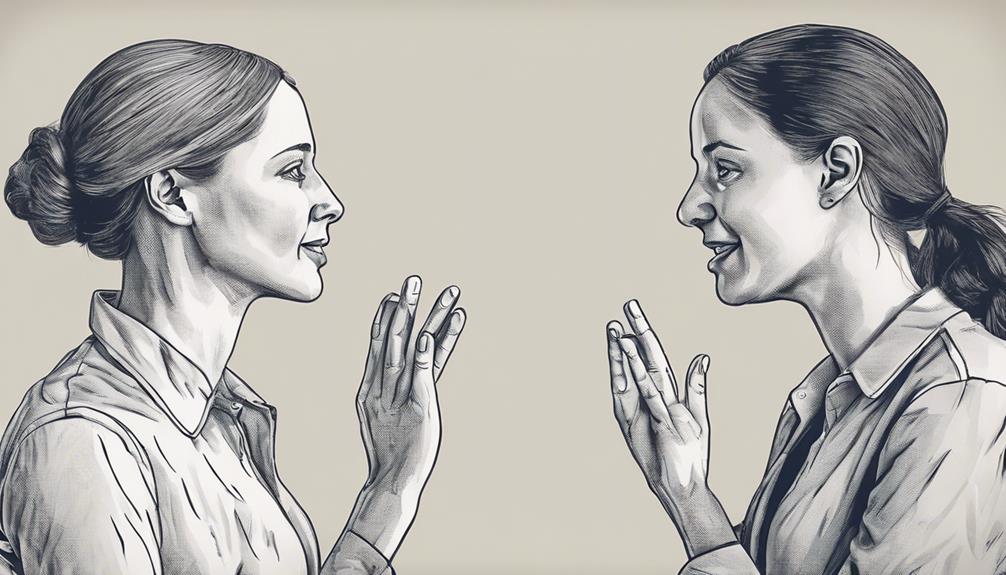
Unfortunately, overlooking the importance of using sign language when speaking in front of a deaf person can result in communication breakdowns and feelings of exclusion. Deaf individuals rely on visual communication, so not accommodating their needs can be disrespectful and frustrating.
Here are four reasons why failing to ensure effective communication with sign language is detrimental:
- Deaf individuals may feel isolated and left out of the conversation, impacting their sense of belonging.
- Misunderstandings can arise, leading to confusion and hindering the exchange of ideas.
- Without sign language, deaf individuals may struggle to express themselves fully, limiting their participation.
- Effective communication with sign language is essential for showing respect and consideration towards the deaf community, fostering inclusivity and understanding.
Sign Language as a Form of Respect

Sign language serves as a fundamental expression of respect towards deaf individuals, embodying inclusivity and understanding in communication. When we use sign language when interacting with a deaf person, we're showing that we value their communication needs and preferences. By not accommodating their preferred mode of communication, we inadvertently create a barrier to understanding and participation for the deaf individual. It's essential to recognize that spoken language alone can exclude deaf individuals from conversations, making them feel isolated and left out.
Using sign language demonstrates our respect for the language and culture of the deaf community. It shows that we're willing to make an effort to communicate in a way that's most effective and comfortable for them. By embracing sign language, we not only break down communication barriers but also foster a more inclusive and respectful environment for all individuals, regardless of their hearing abilities.
Impact of Inaccessible Communication on Deaf Individuals

When communication isn't accessible to deaf individuals, it creates barriers that prevent them from fully engaging and participating.
This lack of accessibility can lead to feelings of isolation and exclusion in social situations.
Providing accessible communication methods is crucial to ensure deaf individuals feel respected and included.
Communication Barriers for Deaf
Communication barriers for deaf individuals impact their daily interactions, leading to feelings of isolation and exclusion.
- Deaf person without sign language: Being excluded from conversations hinders their participation.
- Visual communication: Lack of sign language leads to misunderstandings and frustrations.
- Feeling of isolation: Not using sign language disregards their preferred mode of communication.
- Impact on effective communication: Essential information may be missed, affecting comprehension.
Understanding and addressing these communication barriers is crucial in fostering inclusivity and ensuring that deaf individuals can fully participate in interactions. By acknowledging their preferred mode of communication and actively working to include them, we can create a more accessible and supportive environment for all individuals, regardless of their hearing abilities.
Importance of Accessibility
Understanding the challenges faced by deaf individuals due to inaccessible communication highlights the critical need for prioritizing accessibility in all interactions.
Inaccessible communication not only excludes deaf individuals from active participation but also contributes to feelings of isolation and frustration.
Sign language plays a crucial role in breaking down these barriers and fostering inclusion.
By providing accessible communication methods, we can ensure that deaf individuals have equal opportunities to engage in discussions and access information.
Without such accommodations, deaf individuals may face obstacles in social interactions and overall engagement.
Prioritizing accessibility in communication is essential for creating a more inclusive environment where all individuals, including those who are deaf, can participate fully and feel valued.
Importance of Cultural Sensitivity and Inclusivity

In order to foster a truly inclusive environment, it's essential to prioritize cultural sensitivity when interacting with individuals from diverse backgrounds, including the deaf community.
Here are four key reasons why cultural sensitivity and inclusivity are crucial when communicating with deaf individuals:
- Respecting Preferred Mode of Communication: By using sign language, we honor the deaf person's choice of communication, showing respect for their cultural identity.
- Fostering Effective Communication: Embracing sign language promotes understanding and effective communication between hearing and deaf individuals, bridging potential communication gaps.
- Promoting Inclusivity: Using sign language in interactions with deaf individuals creates an inclusive environment where everyone feels valued and included.
- Demonstrating Mutual Respect: Prioritizing cultural sensitivity showcases mutual respect, acknowledging the richness of diversity and different communication needs within the deaf community.
Frequently Asked Questions
Why Is It Considered Rude to Speak in Front of Deaf People?
When we speak in front of deaf individuals without sign language, it can be seen as rude because it excludes them from understanding and participating in the conversation. This exclusion can make them feel isolated and disrespected, leading to frustration and misunderstandings.
Ignoring their preferred mode of communication hinders their ability to engage fully. It's important to be mindful of these factors to ensure inclusive and respectful communication.
What Are 2 Things Considered Rude by Deaf People?
When considering rudeness towards deaf individuals, two elements stand out: exclusion and ignorance. Excluding deaf people from conversations by not providing accessible communication methods like sign language can isolate them.
Ignorance of their preferred mode of communication overlooks their needs and can be disrespectful. Understanding and embracing accessible communication methods is crucial to showing consideration and inclusivity towards deaf individuals.
Which of the Following Is Considered Rude to Deaf People?
When speaking with a deaf person, it's crucial to consider their communication preferences. Not using sign language in this situation can be seen as disrespectful and exclusionary.
It's important to show respect by utilizing sign language, which allows for better understanding and inclusivity. By incorporating sign language into our interactions, we demonstrate consideration for the deaf person's needs and promote a more inclusive environment for everyone involved.
How Do Deaf People Talk to People Who Don T Know Sign Language?
When deaf individuals communicate with people who don't know sign language, they may use written messages, gestures, facial expressions, or speechreading. Some may seek help from family, friends, or interpreters. Technology like text messaging or communication apps can also aid in communication.
Additionally, carrying communication cards or using communication notebooks is common. Training programs and resources exist to teach basic sign language or communication strategies to improve interactions with deaf individuals.
Conclusion
In conclusion, speaking in front of a deaf person without considering their communication needs is like trying to navigate a dark room without a flashlight.
It's important to be mindful of how we communicate with others, especially those who may require different methods to fully engage in conversation.
By respecting and accommodating the needs of deaf individuals, we can create a more inclusive and understanding environment for everyone involved.
Let's strive to communicate effectively and thoughtfully with all.
Jamie is one of the creative forces behind the words that resonate with our audience at Deaf Vibes. With a passion for storytelling and advocacy, Jamie delves into topics that matter deeply to the deaf and hard-of-hearing community. Jamie’s articles are crafted with empathy, insight, and a commitment to positive change, from exploring the latest advancements in hearing technologies to shedding light on the everyday challenges and victories of those within the community. Jamie believes in the power of shared stories to inspire action, foster understanding, and create a more inclusive world for everyone.
-

 Navigating the VA System2 months ago
Navigating the VA System2 months agoVA Hearing Loss Rating Chart: Understanding Disability Compensation
-

 Therapies and Interventions4 weeks ago
Therapies and Interventions4 weeks ago10 Auditory Processing Goals for Effective Speech Therapy
-

 Living with Hearing Loss3 months ago
Living with Hearing Loss3 months ago10 Deaf-Friendly Dating Sites to Find Your Perfect Match
-

 Sign Language1 month ago
Sign Language1 month agoSign Language Emoji Translator: How to Communicate With Gestures
-

 Navigating the VA System2 months ago
Navigating the VA System2 months agoUnderstanding Bilateral Hearing Loss VA Rating Criteria
-

 Tinnitus2 months ago
Tinnitus2 months agoVA's Rating System for Tinnitus and Hearing Loss Explained
-

 Living with Hearing Loss3 months ago
Living with Hearing Loss3 months agoAn Introduction to Deaf Culture: Understanding the Basics
-

 Hearing Aids2 months ago
Hearing Aids2 months agoAudibel Hearing Aids Cost: A Comprehensive Guide







